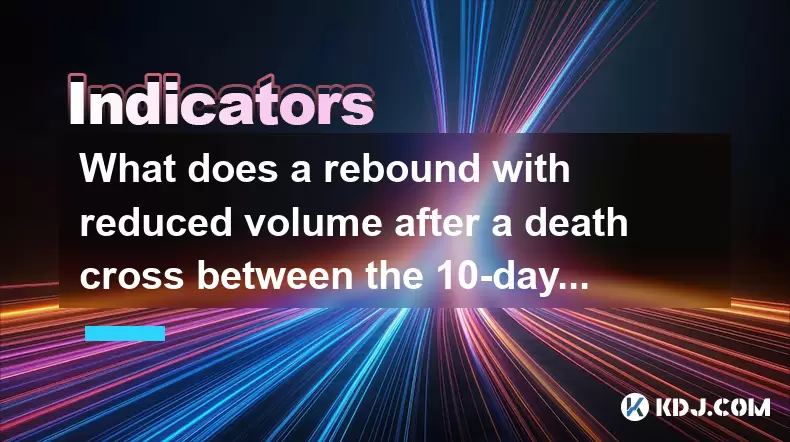-
 Bitcoin
Bitcoin $115100
-1.30% -
 Ethereum
Ethereum $4758
-1.70% -
 XRP
XRP $3.027
-2.19% -
 Tether USDt
Tether USDt $0.9998
-0.01% -
 BNB
BNB $883.2
-1.42% -
 Solana
Solana $204.0
2.62% -
 USDC
USDC $1.000
0.02% -
 Dogecoin
Dogecoin $0.2371
-0.97% -
 TRON
TRON $0.3612
-1.24% -
 Cardano
Cardano $0.9128
-2.19% -
 Chainlink
Chainlink $26.13
-3.93% -
 Hyperliquid
Hyperliquid $44.73
0.90% -
 Sui
Sui $3.715
-0.56% -
 Stellar
Stellar $0.4153
-2.41% -
 Ethena USDe
Ethena USDe $1.000
-0.04% -
 Bitcoin Cash
Bitcoin Cash $588.9
-2.06% -
 Avalanche
Avalanche $25.91
3.27% -
 Hedera
Hedera $0.2525
-1.45% -
 Litecoin
Litecoin $120.9
-1.35% -
 UNUS SED LEO
UNUS SED LEO $9.607
0.30% -
 Toncoin
Toncoin $3.382
-0.31% -
 Shiba Inu
Shiba Inu $0.00001329
-0.38% -
 Uniswap
Uniswap $11.38
-1.67% -
 Polkadot
Polkadot $4.222
2.83% -
 Aave
Aave $354.5
4.93% -
 Dai
Dai $0.0000
0.00% -
 Bitget Token
Bitget Token $4.704
-1.49% -
 Cronos
Cronos $0.1565
1.83% -
 Ethena
Ethena $0.7463
1.55% -
 Monero
Monero $265.8
-0.39%
What does a rebound with reduced volume after a death cross between the 10-day and 20-day moving averages in the moving average system indicate?
A death cross followed by a low-volume rebound often signals weak bullish conviction, suggesting the downtrend may resume.
Aug 13, 2025 at 11:35 am

Understanding the Death Cross in Moving Average Systems
A death cross occurs when a short-term moving average, such as the 10-day moving average, crosses below a longer-term moving average like the 20-day moving average. This technical signal is widely interpreted as a bearish indicator in the cryptocurrency market. It suggests that recent price momentum is weakening and that selling pressure may be increasing. Traders monitor this crossover closely because it often precedes extended downtrends. The underlying principle is that when shorter-term averages fall below longer-term ones, the asset is losing upward momentum. In the context of cryptocurrencies, which are known for high volatility, the death cross can appear frequently, making it essential to analyze additional factors such as volume and price action following the crossover.
Significance of Volume in Post-Cross Price Action
Volume plays a critical role in validating the strength or weakness of price movements following technical signals like the death cross. A rebound in price after a death cross is noteworthy, but when this rebound occurs on reduced volume, it raises caution among technical analysts. Reduced volume indicates a lack of strong buyer participation. In practical terms, this means that although the price may be rising, the market participants are not committing significant capital to sustain the upward movement. For example, if Bitcoin drops below its 10-day and 20-day moving averages and then climbs back slightly over the next few days, but the trading volume is 30% lower than the preceding week’s average, this suggests weak conviction. The absence of robust volume diminishes the reliability of the rebound as a potential reversal signal.
Interpreting a Rebound with Low Volume After a Death Cross
When a cryptocurrency exhibits a price increase after a death cross but with diminished trading volume, it typically reflects a temporary countertrend move rather than a sustainable recovery. This scenario often indicates that the rally is being driven by short covering or minor speculative buying rather than institutional or widespread retail accumulation. Key characteristics include:
- The price fails to reclaim the 10-day moving average decisively.
- Each upward candlestick on the chart is accompanied by shrinking volume bars.
- There is no breakout above recent resistance levels with confirming volume.
Such behavior suggests that bears still control the trend. The market may be consolidating before resuming its downward trajectory. Traders observing this pattern might interpret it as a trapping mechanism, where late buyers enter on the rebound, only to be caught when the downtrend resumes.How to Analyze This Pattern Step by Step
To assess whether a post-death cross rebound with low volume is meaningful, traders can follow these steps: - Confirm the death cross: Ensure the 10-day moving average has clearly crossed below the 20-day moving average on the daily chart.
- Monitor price action after the cross: Observe whether the price begins to rise in the subsequent 3 to 5 trading sessions.
- Check volume levels: Compare the volume during the rebound to the average volume over the previous 10 days. Use a volume oscillator or simple moving average of volume for clarity.
- Evaluate moving average retests: Determine if the price touches or approaches the 10-day or 20-day moving average during the rebound. Lack of follow-through above these levels on low volume reinforces bearish sentiment.
- Look for confirmation candles: A large red candle with high volume following the low-volume rebound can signal renewed selling pressure.
Using tools like TradingView, traders can apply the volume-weighted moving average (VWMA) overlay to better visualize the relationship between price and volume. They can also use the On-Balance Volume (OBV) indicator to see if volume is supporting the price move. If OBV fails to make a new high during the rebound, it confirms weak accumulation.
Practical Implications for Crypto Traders
For active cryptocurrency traders, recognizing a low-volume rebound after a death cross can inform risk management decisions. For instance, holding a long position in Ethereum when such a pattern forms may become risky, especially if stop-loss levels are not adjusted. Instead, traders might consider: - Reducing exposure to long positions in the affected asset.
- Setting tighter stop-loss orders just below the recent swing low formed during the rebound.
- Preparing for short entries if the price breaks below the low of the rebound candle on increasing volume.
- Avoiding new long entries until volume confirms a genuine reversal, such as a close above the 20-day moving average with volume exceeding the 10-day average by at least 50%.
Algorithmic traders can program bots to detect this pattern by coding conditions such as: death cross occurrence, price increase of more than 3% within five days, and volume less than 80% of the 10-day average. The bot can then trigger alerts or initiate hedging strategies automatically.
Common Misinterpretations and Pitfalls
One common mistake is assuming that any price increase after a death cross signals a trend reversal. The presence of low volume invalidates this assumption in most cases. Another pitfall is ignoring the broader market context. For example, if Bitcoin is in a death cross but the overall crypto market is rallying due to macroeconomic news, the signal may be less reliable. Additionally, traders sometimes fail to differentiate between spot and futures volume. Futures volume can be inflated due to leverage and may not reflect genuine spot market demand. Always cross-verify with on-chain data or spot trading volume from major exchanges like Binance or Coinbase.Frequently Asked Questions
What is the difference between a death cross and a golden cross in crypto trading?
A death cross occurs when the 10-day moving average falls below the 20-day moving average, signaling potential downtrend. Conversely, a golden cross happens when the 10-day moving average rises above the 20-day moving average, indicating possible bullish momentum. Both are trend-following indicators, but they suggest opposite market directions.Can a low-volume rebound after a death cross ever lead to a real reversal?
Yes, but only if followed by a subsequent move with strong volume and a confirmed breakout above key moving averages. A low-volume rebound alone is not sufficient. The reversal must be validated by increasing participation, typically seen through rising volume and closing prices above the 20-day MA.How do I set up moving averages and volume indicators on TradingView?
In TradingView, click “Indicators” at the top, search for “Moving Average,” and add two: one with length 10 and another with length 20. For volume, ensure the volume pane is visible at the bottom. You can also add “Volume MA” to smooth volume data and compare it with price action.Does this pattern apply equally to all cryptocurrencies?
The pattern is observable across major cryptocurrencies like Bitcoin, Ethereum, and Binance Coin, but its reliability varies with market liquidity. Low-cap altcoins with erratic volume may generate false signals. The pattern is most effective in high-liquidity assets with consistent trading activity.
Disclaimer:info@kdj.com
The information provided is not trading advice. kdj.com does not assume any responsibility for any investments made based on the information provided in this article. Cryptocurrencies are highly volatile and it is highly recommended that you invest with caution after thorough research!
If you believe that the content used on this website infringes your copyright, please contact us immediately (info@kdj.com) and we will delete it promptly.
- XYZVerse, Shiba Inu, and the 2025 Bull Cycle: A Meme Coin Evolution
- 2025-08-24 13:05:12
- WLFI Token, BingX, and the Trading Landscape: A New York Perspective
- 2025-08-24 12:45:20
- Aave, Governance, Allocation: Navigating DeFi's Shifting Sands
- 2025-08-24 12:45:20
- Crypto Coins in 2025: Meme Coins, Undervalued Blockchains, and Bull Run Predictions
- 2025-08-24 13:05:12
- Fed Pivot Ignites Crypto Rally: Altcoins Set to Outperform?
- 2025-08-24 13:25:12
- Eric Trump, Tokyo, and Metaplanet: A Bitcoin Bonanza?
- 2025-08-24 11:05:13
Related knowledge

What does it mean when the +DI and -DI cross frequently in the DMI indicator but the ADX is flattening?
Aug 11,2025 at 03:15am
Understanding the DMI Indicator ComponentsThe Directional Movement Index (DMI) is a technical analysis tool composed of three lines: the +DI (Positive...

What does the sudden appearance of a "dark cloud cover" candlestick pattern during an uptrend indicate?
Aug 13,2025 at 11:35am
Understanding the 'Dark Cloud Cover' Candlestick PatternThe dark cloud cover is a bearish reversal pattern in technical analysis that typically appear...

What does it mean when the moving average, MACD, and RSI all send buy signals simultaneously?
Aug 11,2025 at 01:42pm
Understanding the Convergence of Technical IndicatorsWhen the moving average, MACD, and RSI all generate buy signals at the same time, traders interpr...

What does it mean when both the KDJ indicator and the RSI show overbought signals simultaneously?
Aug 13,2025 at 11:35am
Understanding the KDJ Indicator in Cryptocurrency TradingThe KDJ indicator is a momentum oscillator derived from the Stochastic Oscillator, widely use...

What does it mean when the price is trading above the SAR indicator but the red dots are densely packed?
Aug 09,2025 at 11:49pm
Understanding the SAR Indicator and Its Visual SignalsThe SAR (Parabolic Stop and Reverse) indicator is a technical analysis tool used primarily to de...

What does it mean when the candlestick chart forms a "Morning Star" but trading volume is sluggish?
Aug 12,2025 at 06:28pm
Understanding the Morning Star Candlestick PatternThe Morning Star is a three-candle bullish reversal pattern commonly observed in cryptocurrency pric...

What does it mean when the +DI and -DI cross frequently in the DMI indicator but the ADX is flattening?
Aug 11,2025 at 03:15am
Understanding the DMI Indicator ComponentsThe Directional Movement Index (DMI) is a technical analysis tool composed of three lines: the +DI (Positive...

What does the sudden appearance of a "dark cloud cover" candlestick pattern during an uptrend indicate?
Aug 13,2025 at 11:35am
Understanding the 'Dark Cloud Cover' Candlestick PatternThe dark cloud cover is a bearish reversal pattern in technical analysis that typically appear...

What does it mean when the moving average, MACD, and RSI all send buy signals simultaneously?
Aug 11,2025 at 01:42pm
Understanding the Convergence of Technical IndicatorsWhen the moving average, MACD, and RSI all generate buy signals at the same time, traders interpr...

What does it mean when both the KDJ indicator and the RSI show overbought signals simultaneously?
Aug 13,2025 at 11:35am
Understanding the KDJ Indicator in Cryptocurrency TradingThe KDJ indicator is a momentum oscillator derived from the Stochastic Oscillator, widely use...

What does it mean when the price is trading above the SAR indicator but the red dots are densely packed?
Aug 09,2025 at 11:49pm
Understanding the SAR Indicator and Its Visual SignalsThe SAR (Parabolic Stop and Reverse) indicator is a technical analysis tool used primarily to de...

What does it mean when the candlestick chart forms a "Morning Star" but trading volume is sluggish?
Aug 12,2025 at 06:28pm
Understanding the Morning Star Candlestick PatternThe Morning Star is a three-candle bullish reversal pattern commonly observed in cryptocurrency pric...
See all articles

























































































